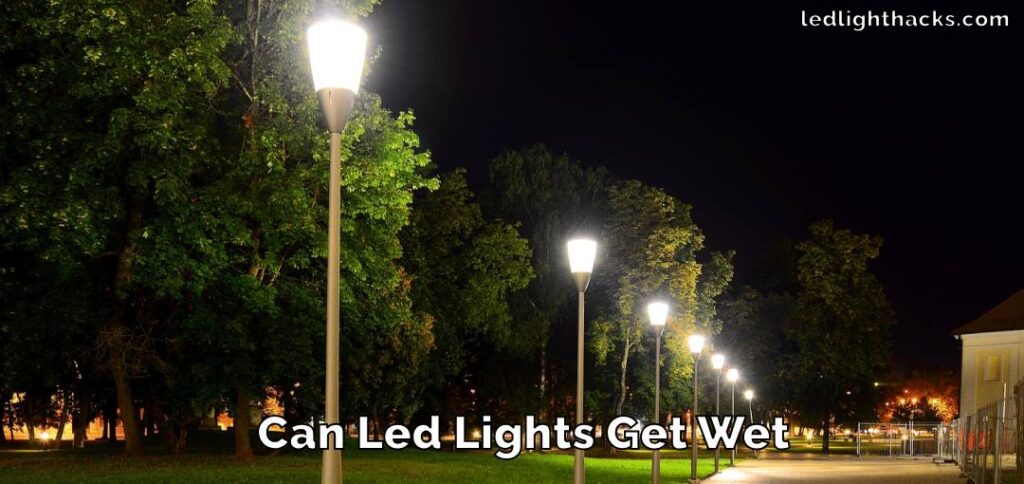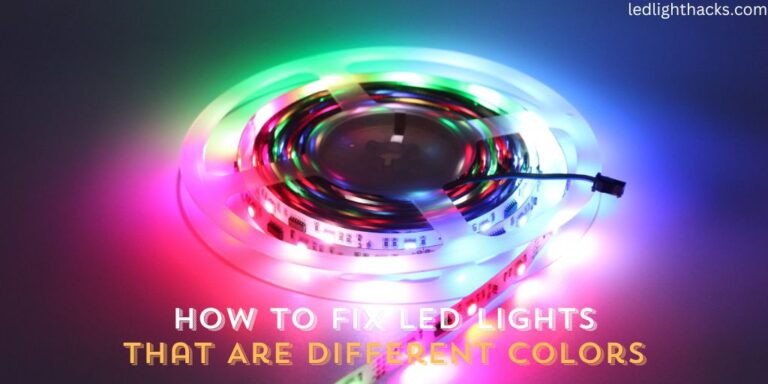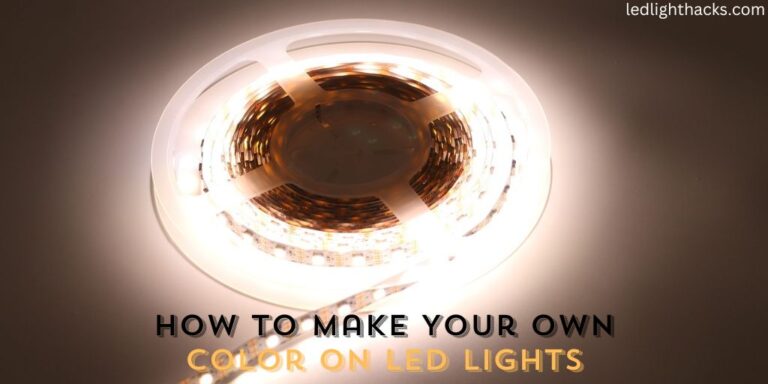How to Stop My Roku Remote From Controlling My LED Lights
Ever had the weird moment where using your Roku remote to change the TV channel ends up turning your LED lights on or off? It’s a surprising and pretty annoying issue. This mix-up happens because both the remote and the LED lights use something called infrared (IR) signals.
Think of IR signals as invisible messages that these devices send to communicate. But when your Roku remote and your LED lights understand the same type of invisible message, they can get their wires crossed.
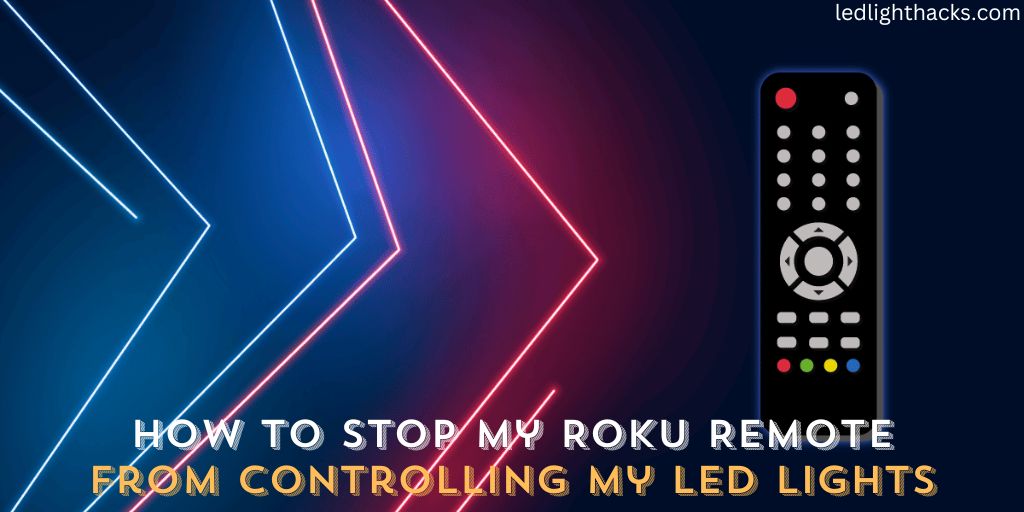
This means that instead of just changing the channel or adjusting the TV volume, you might also accidentally control your room’s lighting. It’s the kind of mix-up that can really be bothersome, especially during a movie night or when you have company.
Don’t worry, though.
This article is here to help you sort it out. We’re going to walk through how to stop my Roku remote from controlling my LED lights and the steps to make sure your Roku remote only talks to your TV and leaves your LED lights alone.
We’ll keep it simple and straightforward, so you can get back to enjoying your TV time without any unexpected light shows.
Why You Need to Stop Roku Remote from Controlling My LED Lights
When your Roku remote accidentally controls your LED lights, it can create some annoying problems. Imagine sitting down to watch your favorite show, and suddenly your room lights flicker or turn off without you touching the light switch.
This happens because many LED lights and Roku remotes work on similar infrared (IR) frequencies. It’s like they’re speaking the same language, so a command from your remote can get misinterpreted by your lights.
This kind of mix-up can be more than just a small bother. It can mess up the mood of your room. For instance, if you’re having a quiet evening or a dinner party, suddenly changing lights can be really disruptive.
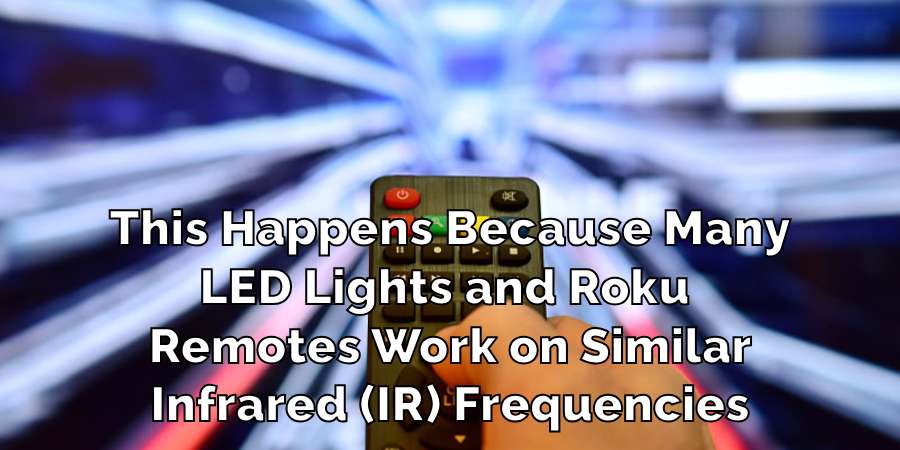
Also, if your lights keep turning on and off without reason, it might wear them out faster. That means you could find yourself replacing your LED lights sooner than you’d expect, which can be costly.
Moreover, it can be a big hassle, especially if you’re in the middle of relaxing or having fun with friends and family. Imagine having to get up and fix the lights every time you use your Roku remote – it’s not ideal.
So, solving this issue is crucial for making sure both your Roku device and LED lights work well without bothering each other. By taking care of this, you can enjoy your shows and your lighting just the way you like them.
Tools We Need to Stop Roku Remote from Controlling My LED Lights
When it comes to solving the problem of your Roku remote controlling your LED lights, having the right tools makes all the difference. These tools are easy to find and simple to use, ensuring that you can fix the issue without too much hassle.
- Your Roku Remote: This is the key player in this situation. You’ll need it to test and confirm that the issue is resolved after making adjustments.
- LED Light Controller: This is the device you typically use to control your LED lights. Keep it close by for testing purposes.
- IR Blaster (optional): If you have an IR blaster, it’s a useful addition. It enhances the IR signal to your Roku, which can help in reducing interference with other devices.
- Adhesive Tape (Electrical or Duct Tape): You’ll use this tape to cover certain parts and block signals. It’s a simple but effective way to manage the issue.
- Small Opaque Object (like a sticker or a piece of opaque tape): This will be used to cover the IR sensor on your LED lights, preventing them from picking up signals from your Roku remote.
With these tools in hand, you’re set to start the process of separating the control of your Roku and your LED lights. This approach ensures a straightforward solution, allowing you to return to enjoying your entertainment and lighting without any unexpected surprises.
Remember, the goal is to make your tech work for you, not against you. By using these tools, you can easily reclaim control over your devices.
How to Stop My Roku Remote from Controlling My LED Lights
Having your Roku remote mistakenly control your LED lights can be quite the headache, but it’s a problem you can usually fix yourself. Let me walk you through a simple guide to get this sorted:
Find the IR Sensors
First off, locate the IR sensors on both your Roku remote and LED lights. These sensors are tiny, clear bulbs on the front of the devices. It’s important to know where these are for the steps that follow.
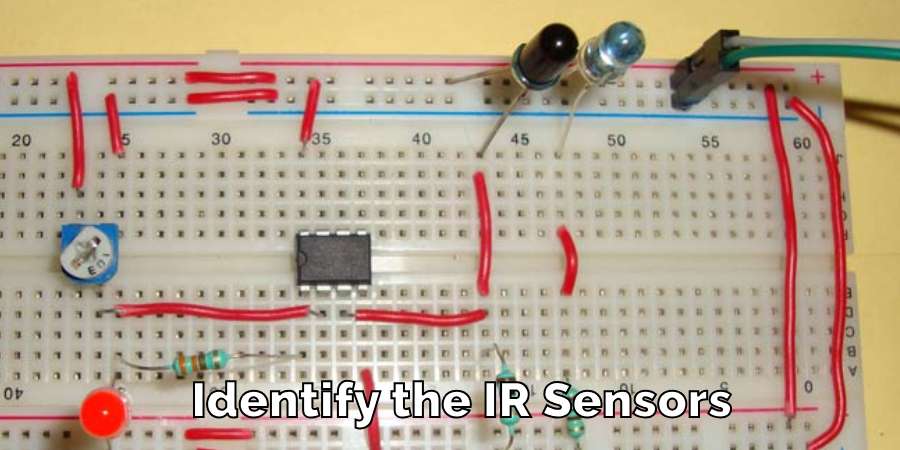
Move Things Around
Sometimes, the solution is as simple as changing the position of your LED lights or Roku device. Try moving them a bit to see if it stops the remote from interfering with your lights.
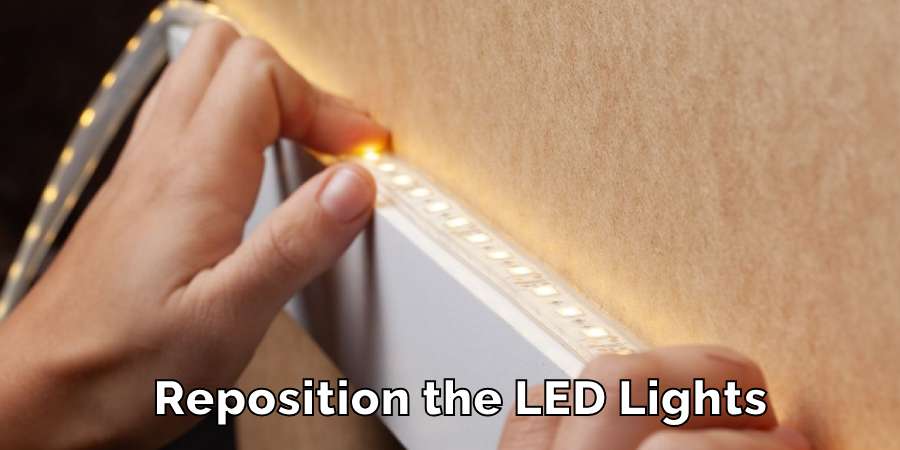
Try an IR Blaster
If repositioning doesn’t cut it, consider using an IR blaster. This device amplifies the IR signal from your remote to the Roku, reducing confusion with other devices.
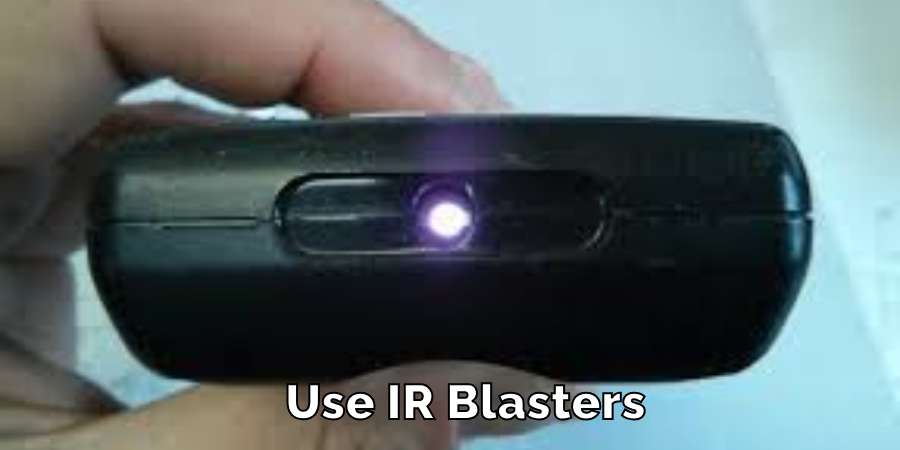
Cover the LED Lights’ IR Sensor
Placing a small sticker or piece of tape over the IR sensor on your LED lights can block signals from your Roku remote. Just ensure you can still control the lights with their designated remote.
Tweak Remote Settings
See if your Roku remote has an option to adjust the IR signal strength. Lowering this might help avoid accidental control of other devices.
Check for Updates
Keep an eye out for firmware updates for both your Roku device and LED lights. Manufacturers might release updates to address such issues.
Consider Alternative Controls
Think about using different methods to control your Roku or LED lights, like smartphone apps. These don’t rely on IR signals, so you won’t run into the same issue.
Get Professional Help
If you’ve tried all the above and nothing works, it might be time to seek help from a professional or contact customer support for your devices.
Dealing with your Roku remote accidentally controlling your LED lights can be frustrating, but it’s often a manageable issue. By following these straightforward steps, you can ensure that your Roku and lights operate independently, letting you enjoy your entertainment without any unwanted surprises.
Finding the right fix for your setup might require some patience and experimentation, but with a bit of effort, you can solve this issue and get back to enjoying your TV and lights as you intended.
Precaution while Stopping Your Roku Remote from Controlling Your LED Lights
When you’re trying to stop your Roku remote from controlling your LED lights, it’s important to be careful and think about what you’re doing. First, make sure you don’t cover the IR sensor on your Roku device itself.
If you do, the remote won’t be able to communicate with the Roku, which could stop you from using it properly. It’s also key to handle the IR sensors on both the remote and the lights gently. These sensors are delicate, so rough handling could damage them.
And when you’re using tape or any other material to cover the sensors on your lights, pick something that won’t leave sticky stuff behind. You don’t want to end up with a mess that’s hard to clean or ruins the surface of your devices.
Another important thing to remember is that making changes to your devices, like covering sensors or using external gadgets, could void their warranties. This means if something goes wrong later, the company might not help you fix it for free.
So, always read the instructions from the manufacturer before you start. If you’re not sure about what you’re doing or if the instructions aren’t clear, it might be a good idea to ask for help from someone who knows about electronics.
FAQ’s
How Do I Stop My TV Remote From Interfering With LED Lights?
To prevent your TV remote from accidentally controlling your LED lights, you can use the same methods as with the Roku remote. First, try moving your TV or LED lights to different spots. Sometimes, just changing where they are can stop the remote from affecting the lights.
If that doesn’t work, you can cover the IR sensor on your LED lights with something like a small piece of tape or a sticker.
This blocks the remote’s signals from reaching the lights. Also, check if your TV remote has any settings that allow you to lower the strength of the IR signal, which can help reduce interference.
How Do I Turn Off the LED Light on My Roku?
The LED light on your Roku device is there to show you what the device is doing, like when it’s on or actively streaming. Unfortunately, there’s no way to completely turn off this light.
However, you can make it less bright. Go into your Roku’s settings menu, and look for an option to adjust the brightness of the LED light. This won’t turn it off, but it will make it less noticeable, especially in a dark room.
How Do I Unsync My Roku Remote?
If you need to unsync or disconnect your Roku remote, it’s quite straightforward. Go to the settings menu on your Roku device. In there, look for the section about remotes or devices connected to your Roku. You should find an option to manage or disconnect remotes.
Follow the on-screen instructions to unsync your remote. This might be useful if you’re having issues with the remote or if you want to connect it to a different Roku device.
Does Roku Have Night Mode?
Absolutely, Roku comes with a handy feature called ‘night listening mode’. This mode is great for when you want to watch TV late at night without disturbing others. What it does is balance the sound levels.
This means it reduces the volume of really loud noises like explosions in a movie and increases the volume of quieter sounds like dialogue. So, you won’t get those sudden loud noises that might startle you or wake up others in your house.
You can find this option in the Roku’s audio settings. It’s a useful feature for enjoying your favorite shows or movies at night without having to constantly adjust the volume.
What Causes Remote Control Interference?
There are a few reasons why your remote control might not be working as it should. The most common reason is overlapping IR (infrared) frequencies. This is when your remote and another device, like LED lights, use similar IR signals, and they get mixed up.
Also, electronic interference from other gadgets around your home can disrupt the IR signal. This could be things like Wi-Fi routers or even microwaves. Lastly, physical obstructions can block the signal.
This means if something is in the way between your remote and the device it’s trying to control, like a coffee table or a vase, it might stop the remote from working properly. Understanding these causes can help you troubleshoot and fix any issues you’re having with your remote.
Conclusion
Fixing the problem where your Roku remote controls your LED lights can be a bit of a task, but it’s definitely something you can handle with a bit of patience and the right approach.
The key is to try out different solutions like moving your Roku or LED lights to different places, covering up the IR sensors on the lights, or even changing settings on your remote. Sometimes, you might need to try a few different things before you find what works for your setup.
By following these steps, you can make sure your Roku and LED lights work well without interfering with each other. This article has explored how to stop my Roku remote from controlling my LED lights.
This way, you can enjoy watching TV and have the perfect lighting in your room, just the way you like it, without any unexpected surprises from your remote. It’s all about finding the right balance and solution that fits your home setup.
You may read also – How to Convert AC to DC for LED Lights
How to Change a Light Switch without Turning Off the Power
Mastering the skill of changing a light switch without turning off the power holds great…
How To Stick LED Strip Lights On Wall Without Damaging Paint
LED light strips have surged in popularity, adorning homes and spaces with their vibrant colors…
Can Led Lights Get Wet
LED lights are everywhere, from homes to city streets, known for their efficiency and brightness….
Creative Ways to Use LED Strip Lights in Your Home
LED strip lights, those brilliant strips of technology, serve as a beacon of innovation in…
Can Solar Lights Catch Fire
Solar garden lights are your go-to pal for lighting up your backyard oasis while keeping…
What gauge wire for LED lights
When diving into LED lighting, one aspect that might not catch your eye at first…



